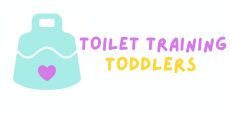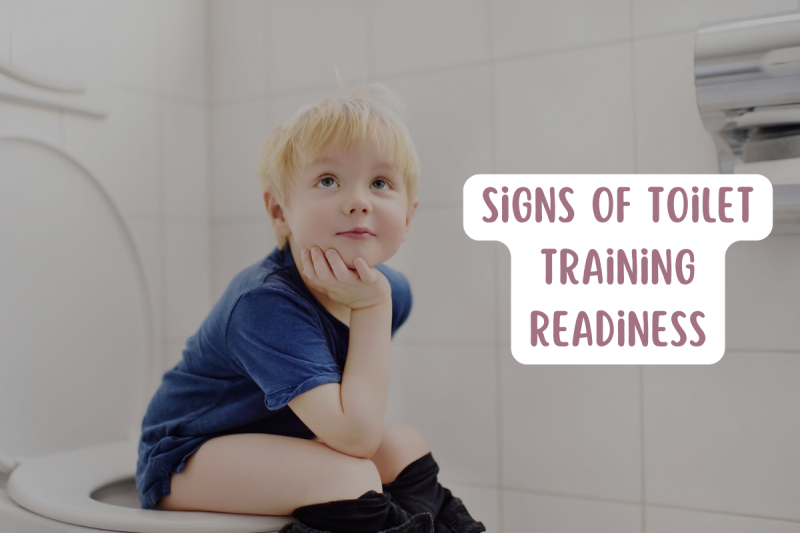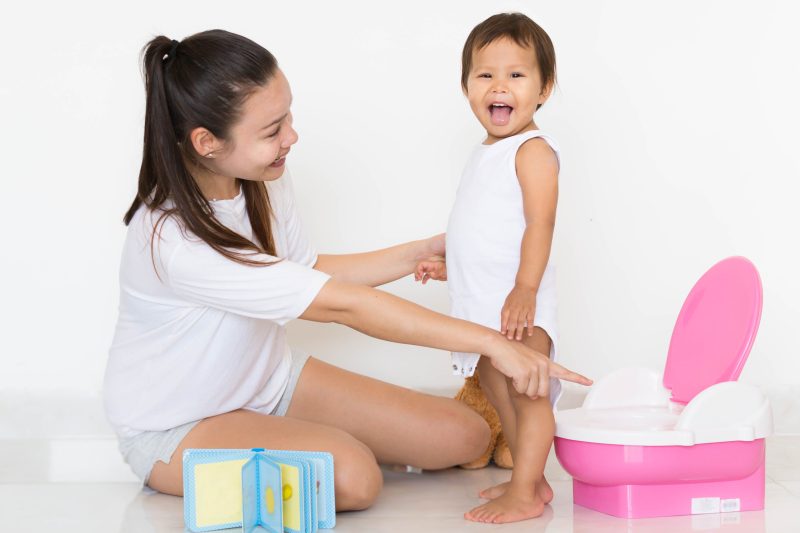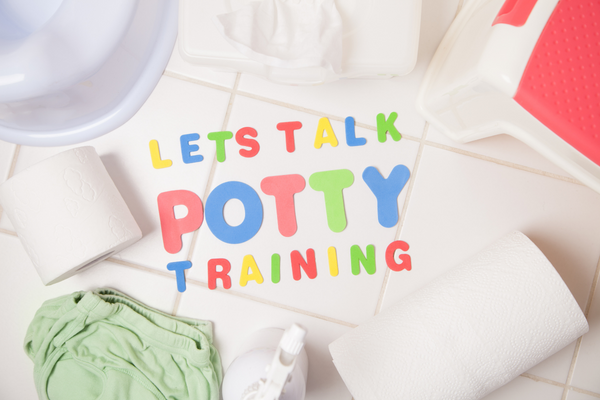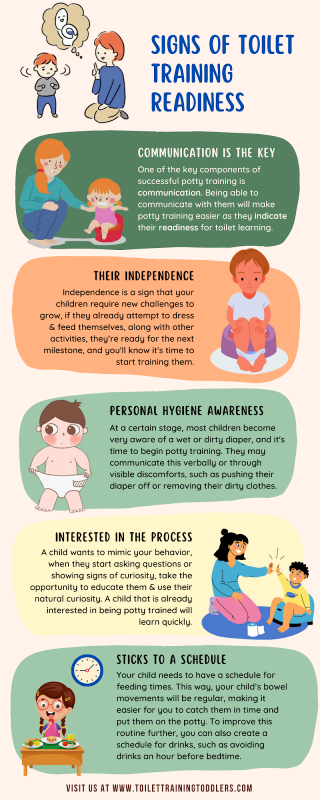It can be hard to tell when a child is ready for toilet training. Some are capable at just 18 months of age, while others may not show any signs until 3 or 4 years old.
But what are the signs of potty training readiness? Parents should keep an eye out for signs of when their child might be ready for potty training. If they show signs, the sooner you start, the easier it will be. The child’s readiness depends on a few factors. Here are the main signs to look out for.
Communication Is the Key
One of the key components of successful potty training is communication.
Encourage your child to communicate their needs when they begin to talk, as it can make potty training easier. When they can indicate their readiness for toilet learning and acknowledge their need for the bathroom, even after they’ve gone, it’s a clear sign that it’s time to start potty training.
It’s important to use keywords or phrases that your child can reiterate when they need to go. Make it a habit to check at 2 hours intervals during the day.
HINT: Put a timer on your phone every 2 hours to keep you accountable!
Independence
If your child is eager to do things on their own, they will pick up the habit quickly.
If your child is already attempting to dress and feed themselves, it could be a sign that they are ready for the next milestone. This is one of the readiness signs, indicating it’s time to start training.
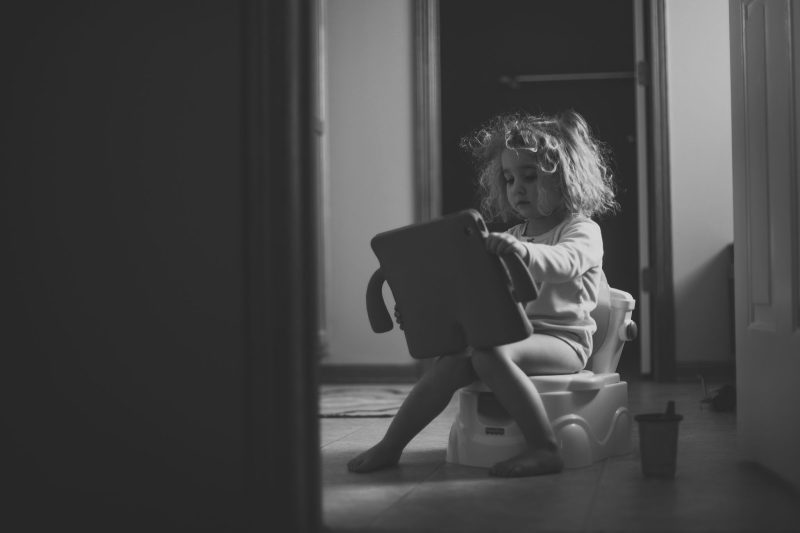
In fact, independence is a sign that your children require new challenges to grow and will easily learn all the steps necessary for this process.
Their Diaper Is Dry for Several Hours at a Time
Children relieve themselves frequently until the age of 2, and they don’t have much control over their bladder. However, from 2 years and up, you may notice that your child is using fewer diapers, and they can keep their diapers dry for many hours at a time, even after a nap.
This is a clear indication that your toddler can control themselves and are ready for potty training. Praise them when they’ve managed to hold it in and take them to the potty frequently, especially after naps.
Personal Hygiene Awareness
Toddlers will go through a phase where they become extremely sensitive to personal hygiene. This could be in the form of not wanting food on their fingers or being fascinated with cleaning themselves.
At this stage, most children will also become very aware of a wet or dirty diaper, and it’s time to begin potty training. They may communicate this verbally or through visible discomforts, such as pushing their diaper off or removing their dirty clothes.
When you notice this behavior, take the diaper off and sit your child down on the potty every time you can gauge their desire to use the toilet when they need to pee or have a bowel movement.
Interested in the Process
As your toddler becomes more aware of what people in the house are doing, you will notice that they want to mimic your behavior — this is even more common if the child has older siblings.
When they start asking questions or showing signs of curiosity, this is an excellent sign of readiness to start toilet training.
Take the opportunity to educate them and use their natural curiosity. A child that is already interested in being potty trained will learn quickly and will be more eager to replicate this behavior.
Can Dress Themselves
Children will start to show a desire for autonomy around 2 years old, and this is a good thing. It allows parents to utilize the child’s desire for control over the situation and to teach them basic life skills.
If your child wants to dress themselves and can take their clothes off, put on shoes, or pull down trousers, they are likely to get to the potty in time before wetting themselves.
However, this is a stage of trial and error — expect a few accidents and avoid scolding them or putting them off training. They should practice pulling down their training pants when they need to use the bathroom and pulling them up when they are done.
Physically Able to Use the Potty
When learning to potty train, motor controls, strength, and overall dexterity are very important. If you are using a toddler potty to train your child, you want to ensure that they’re big enough to use it.
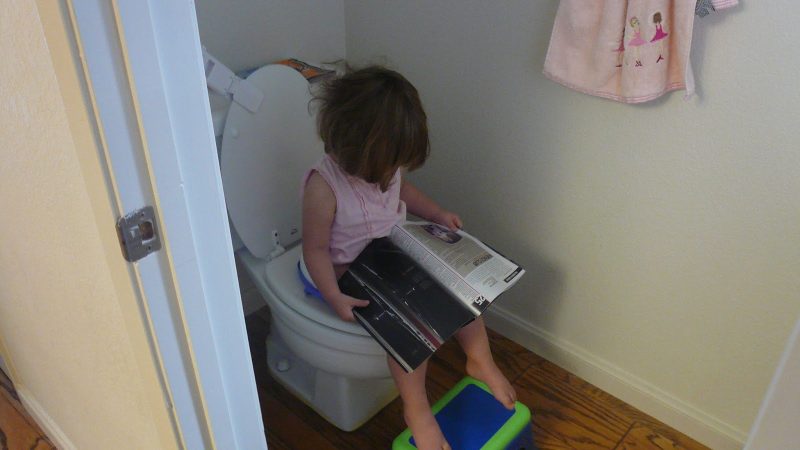
Similarly, if you are using the regular toilet, ensure they can reach it and comfortably sit in it — most parents consider using a step and a potty chair. Of course, there are workarounds to this if your child is not currently able to do these things on their own.
Sticks to a Schedule
Hopefully, your child already has a routine — if not, now is the time to create a schedule you can stick to, especially when it comes to feeding times. This way, your child’s bowel movements will be regular, making it easier for you to catch them in time and put them on the potty.
This routine will make it easier for you to time bathroom breaks. To improve this routine further, you can also create a schedule for drinks, such as avoiding drinks an hour before bedtime.
Can Follow Simple Instructions
As already mentioned, communication is very important. If your child can follow basic instructions like – ‘give me the ball’ or ‘bring a toy from your room’ or questions like – ‘do you want a snack?’ – they have the communication skills needed for potty training.
If you can ask your toddler to ‘get up,’ ‘sit down,’ ‘wash your hands,’ and other basic commands needed for potty training, they can definitely go to the bathroom.
Conclusion
If your child shows even one of the aforementioned signs, you can consider it time to get started with potty training. The potty training process itself can take a few months to get right, so the earlier you start, the better it is.
However, do not rush a child before they are ready — this can put them off the process altogether and set them back.
When potty training, you want to keep it a positive experience and help your child understand their own needs and be aware of their own bodily functions in the simplest sense. The sooner they can learn to detect when they need to use the bathroom, the easier it will be to learn the rest of the process. The initial objective should be getting to the bathroom in time.
